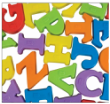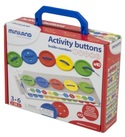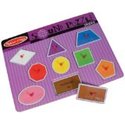- Home
-
VI Basics
-
Eligibility
- VI Referrals >
- Medical Vision Exam >
- Visual Diagnosis >
-
FVLMA
>
- FVLMA & Service Printables
- Conducting a FVLMA
- What is the FVLMA
- Environmental Observations
- Student Observations
- Interviews
- Assessment Kit Materials
- Oculomotor Skills
- Near Visual Acuities
- Print Comparisons
- Distance Acuity
- Test Visual Fields
- Vision Skills
- Learning Media Assessment
- Reading Rates
- Writing the FVE Report
- Other Evaluations >
-
Service
- ECC Annual Needs
- Service Plans >
- Goals & Objectives >
-
Adaptations
>
- Accommodations & Modifications
- School Campus Adaptations
- Playground Adaptations
- Movies & Assemblies
- Classroom Design Tips
- Adjust Lighting
- Label Classroom
- Board Work (Chalk, Interactive, White)
- Morning Meeting
- Lectures & Instruction
- Accessible Educational Materials
- Photocopying
- Font Legibility
- Increase Contrast
- Pictures and Worksheets
- Large Print
- Accommodations for VI
- Accessible Content for BLVI
- Collaboration >
-
Instruction
>
- Material Preparation
- Virtual Instruction
- Development of ECC Resources
- Teaching the ECC
- Teaching in Thematic Units
- Instructional Strategies
- iPads as Instructional Tools
- Standard Course of Study Strategies & Activities
- The Art of Teaching the ECC
- Activities to Teach the ECC
- Virtual & F2F Strategies
- Found of Teaching the ECC in the Age of Virtual Instruction
- Complete Set Bonus >
-
Themes
>
- Using Themes to Teach the ECC
- Back to School
- Birthday's and Aging
- Self & Identity
- Pets & Service Animals
- Family & Geneology
- Apples & Orchard
- Autumn & Home Maintenance
- Pumpkins & Farms
- Costumes & Candy
- Politics & Voting
- Grocery Stores
- Meal Preparation & Thankfulness
- Shopping & Clothing Care
- Christmas & Gift Giving
- Clocks, Time, New Year
- Resolutions & Healthy Habits
- Wintertime
- Cold & Flu Season
- Adapted Sports & Paralympics
- Valentines Love & Friendship
- Severe Weather Unit
- Stay Safe
- Home & Spring Cleaning
- Springtime & Easter
- Gardening
- Communication & Post Office
- Hygiene & Grooming Unit
- Transportation
- Jobs & Employment
- Graduation & Life Changes
- The Great Outdoors
- Vacations & Travel
-
ECC
-
Compensatory
>
-
VI Assistive Tech
>
- VI AT Printables
- Selecting the Right AT
- Overview of Assistive Technology
- Low/Medium Tech Devices for Tactual Learners
- Non-Optical Low Vision Devices
- Optical Devices for Near
- Optical Devices for Distance
- Making the iOS Device Accessible
- VoiceOver
- iOS Accessibility Resources
- Screen Magnifiers & Readers
- Magnifier Apps
- Keyboarding Instruction
- Word Processing and Shortcuts
- Navigate Computer without a Mouse
- Video Magnifiers
- Video Magnifier Instruction
- Braille Technology
- Notetaker Instruction
- Auditory Access Devices
- Accessing Audio Books
- Apps to Access Books
- Apps for VI
- VI AT Resources
- Social Skills >
- Self Determination
-
Sensory Efficiency
>
-
Independent Living
>
- Responsibility & Independence
- General Home Safety
- Bathroom Adaptations
- Hygiene & Grooming
- Medication Adaptations
- Dramatic Play
- Dressing & Clothing Identification
- Clothing Management
- Housekeeping Maintenance
- Eating Adaptations
- Mealtime Independence
- Kitchen Adaptations
- Food Preparation
- Recipe Activities
- Money
- Orientation & Mobility >
- Recreation & Leisure >
- Career & Vocational >
-
Compensatory
>
- VI Store
- Jobs
Early Literacy ExperiencesBy: Carmen Willings
teachingvisuallyimpaired.com Updated March 24, 2024 Students who are blind or visually impaired will may need adaptations to access the language arts program. Literacy and reading skills are foundational skills that will allow the student to access all areas of the curriculum. It is the role of the Teacher of Students with Visual Impairments (TVI) to determine the student's primary reading mode. Although the student should develop strong auditory skills, it is essential for the student to learn to read print and/or braille. The selection of picture books to reading to students who have little or no useful vision is very important and particularly for students with additional disabilities. When selecting children's books, poems or songs, choose ones that relate to the unit or to familiar experiences or books that suggest new experiences the class will be encountering. You will also want to consider if the book depends on the pictures. The best way to tell whether or not a story depends on the pictures for meaning is to cover the pictures and read the story yourself or read it to another person. Select stories that do not depend on visual experiences or pictures. Choose short stories, poems or songs that are related to the topic and can be read in one sitting. Vary the selections, particularly for older students as picture books are not always age appropriate. Encourage the students to listen to, retell, and act out stories Make the story come to life by reading with plenty of expressions, especially the dialog.
Read to the student frequently and provide a literacy-rich environment. As you read books with the student, help them develop an enjoyment in listening to the stories by reading with inflection and varying your voice. Encourage the student to pretend to read braille stories and explore objects related to the stories. Consider creating a book bag with objects related to the story that the student can explore as the story is read. For younger students, be sure to include books with objects, raised lines and textures or create your own. As with all children, practice proper care of the books and help the student develop "book sense" (e.g. locate front/back, top/bottom, right/left, middle/center; turn pages, etc.) and examine the writing and tactile graphics on each page. Exposing children to literacy experiences at an early age is important for all students, whether they will be print or braille readers. Don’t hold off on providing exposure to braille until the student is ready for formal instruction. Think of the many opportunities sighted children have to print in their world. Students who are blind need the same exposure and experiences but it will need to be more intentional and less incidental. Language ArtsThe Language Arts Station, in an early childhood setting, should have a wide variety of games, pictures, and puzzles that are adapted for students with visual impairments. Incorporate rhymes, word games, and other fun activities to increase phonological awareness, reading acquisition and to practice concepts and listening skills. Also, incorporate MP3/Ipod/CD/tape players with headphones or earbuds with a collection of stories on tape/CD/digital.
Literacy is used almost constantly throughout the home, school and community environment, and the students need to know this. The book area should provide a variety of reading materials that would be found in these settings, including telephone books, restaurant menus (print and/or Braille), magazines, newspapers, cookbooks, signs, brochures, postcards, greeting cards, posters, pictures, charts, music lyrics, and church bulletins. Incorporate homemade picture books. Pair Objects with BooksFor younger students and those with learning disabilities, provide objects related to the story whenever possible, to actively involve the student and make it a concrete experience. Create book bags or book boxes to accompany stories and books. Fill the bags or boxes with some of the items from the story. When you have current braille or a future braille reader, select Twin-Vision books (Books with both print and braille.), braille versions of the book to accompany the book, or request that the Teacher of Students with Visual Impairments braille passages or key sentences/words from the book. Be sure to provide the TVI with time to prepare the adapted book.
Environmental PrintStudents need to learn how to correctly respond to informational signs/sounds in the environment (telephone, elevator, etc.). Provide students with ongoing opportunities to read/identify environmental signs through direct instruction in the classroom as well as natural exposure during field trips.
Toys for Early ExposureThe following are just some commercially available toys that help students explore and learn braille. You will have more variety, of course, if you adapt toys by adding braille. Simply locate toys with shapes, numbers, and letters and create braille labels either manually using clear labels with a slate and stylus or braillewriter or use a braille label maker. Although braille label makers only produce Grade 1 braille, they are very helpful when you need to quickly label and are still learning the braille code and how to produce it. Suggested Materials
|
Compensatory SkillsConcept Development
Alternative Communication
Emergent Literacy
Access Print
Pre-Braille
Braille Code
Braille Formatting
Braillewriter
Slate & Stylus
Tactile Graphics
nemeth code
Access Classes
Abacus
Organization
Study Skills
Time Management
Listening Skills
|
|
Teaching Students with Visual Impairments LLC
All Rights Reserved |
- Home
-
VI Basics
-
Eligibility
- VI Referrals >
- Medical Vision Exam >
- Visual Diagnosis >
-
FVLMA
>
- FVLMA & Service Printables
- Conducting a FVLMA
- What is the FVLMA
- Environmental Observations
- Student Observations
- Interviews
- Assessment Kit Materials
- Oculomotor Skills
- Near Visual Acuities
- Print Comparisons
- Distance Acuity
- Test Visual Fields
- Vision Skills
- Learning Media Assessment
- Reading Rates
- Writing the FVE Report
- Other Evaluations >
-
Service
- ECC Annual Needs
- Service Plans >
- Goals & Objectives >
-
Adaptations
>
- Accommodations & Modifications
- School Campus Adaptations
- Playground Adaptations
- Movies & Assemblies
- Classroom Design Tips
- Adjust Lighting
- Label Classroom
- Board Work (Chalk, Interactive, White)
- Morning Meeting
- Lectures & Instruction
- Accessible Educational Materials
- Photocopying
- Font Legibility
- Increase Contrast
- Pictures and Worksheets
- Large Print
- Accommodations for VI
- Accessible Content for BLVI
- Collaboration >
-
Instruction
>
- Material Preparation
- Virtual Instruction
- Development of ECC Resources
- Teaching the ECC
- Teaching in Thematic Units
- Instructional Strategies
- iPads as Instructional Tools
- Standard Course of Study Strategies & Activities
- The Art of Teaching the ECC
- Activities to Teach the ECC
- Virtual & F2F Strategies
- Found of Teaching the ECC in the Age of Virtual Instruction
- Complete Set Bonus >
-
Themes
>
- Using Themes to Teach the ECC
- Back to School
- Birthday's and Aging
- Self & Identity
- Pets & Service Animals
- Family & Geneology
- Apples & Orchard
- Autumn & Home Maintenance
- Pumpkins & Farms
- Costumes & Candy
- Politics & Voting
- Grocery Stores
- Meal Preparation & Thankfulness
- Shopping & Clothing Care
- Christmas & Gift Giving
- Clocks, Time, New Year
- Resolutions & Healthy Habits
- Wintertime
- Cold & Flu Season
- Adapted Sports & Paralympics
- Valentines Love & Friendship
- Severe Weather Unit
- Stay Safe
- Home & Spring Cleaning
- Springtime & Easter
- Gardening
- Communication & Post Office
- Hygiene & Grooming Unit
- Transportation
- Jobs & Employment
- Graduation & Life Changes
- The Great Outdoors
- Vacations & Travel
-
ECC
-
Compensatory
>
-
VI Assistive Tech
>
- VI AT Printables
- Selecting the Right AT
- Overview of Assistive Technology
- Low/Medium Tech Devices for Tactual Learners
- Non-Optical Low Vision Devices
- Optical Devices for Near
- Optical Devices for Distance
- Making the iOS Device Accessible
- VoiceOver
- iOS Accessibility Resources
- Screen Magnifiers & Readers
- Magnifier Apps
- Keyboarding Instruction
- Word Processing and Shortcuts
- Navigate Computer without a Mouse
- Video Magnifiers
- Video Magnifier Instruction
- Braille Technology
- Notetaker Instruction
- Auditory Access Devices
- Accessing Audio Books
- Apps to Access Books
- Apps for VI
- VI AT Resources
- Social Skills >
- Self Determination
-
Sensory Efficiency
>
-
Independent Living
>
- Responsibility & Independence
- General Home Safety
- Bathroom Adaptations
- Hygiene & Grooming
- Medication Adaptations
- Dramatic Play
- Dressing & Clothing Identification
- Clothing Management
- Housekeeping Maintenance
- Eating Adaptations
- Mealtime Independence
- Kitchen Adaptations
- Food Preparation
- Recipe Activities
- Money
- Orientation & Mobility >
- Recreation & Leisure >
- Career & Vocational >
-
Compensatory
>
- VI Store
- Jobs






